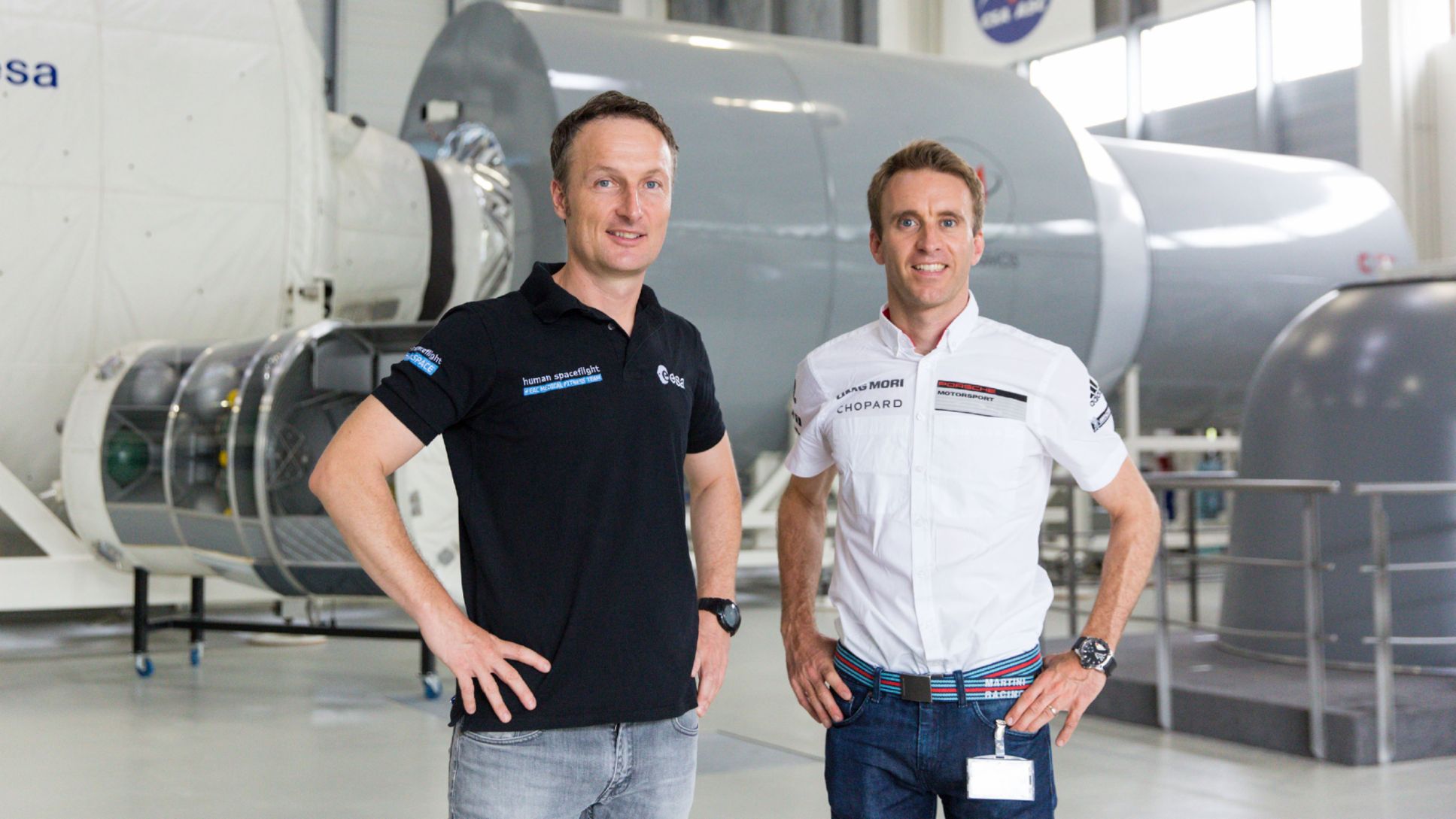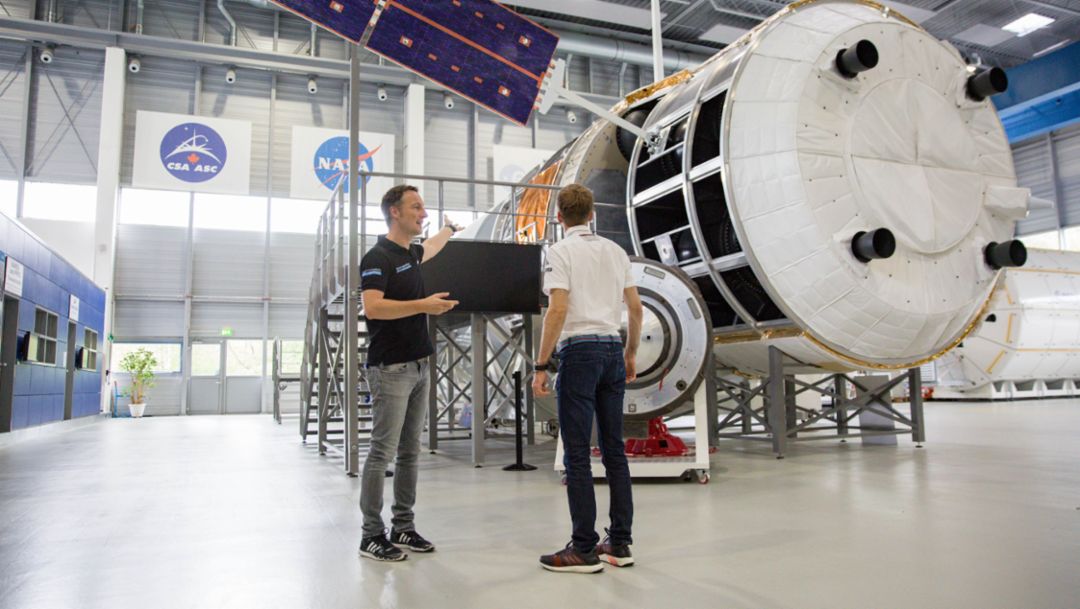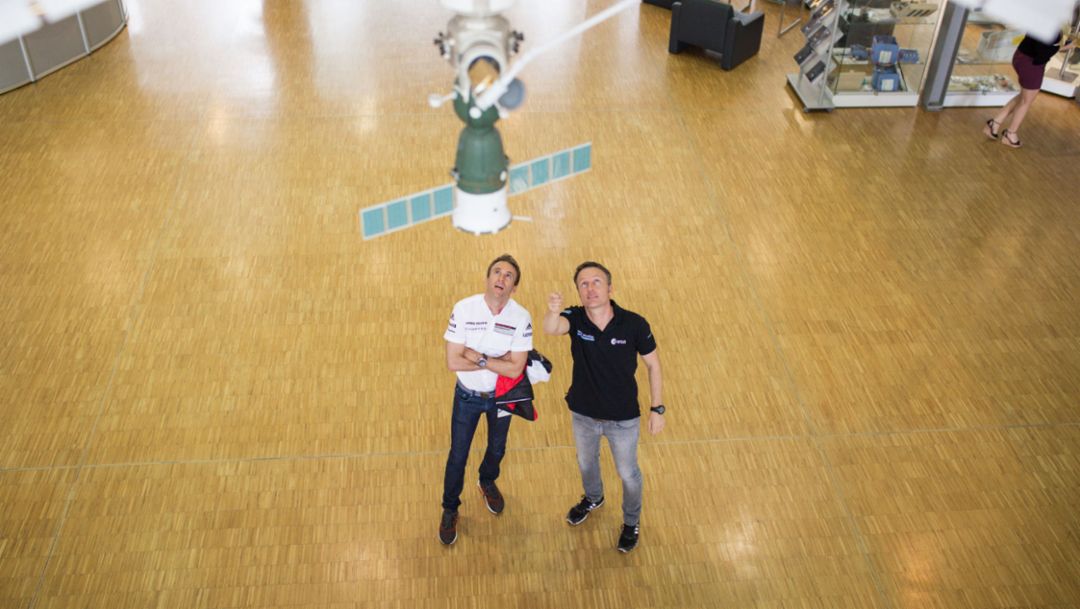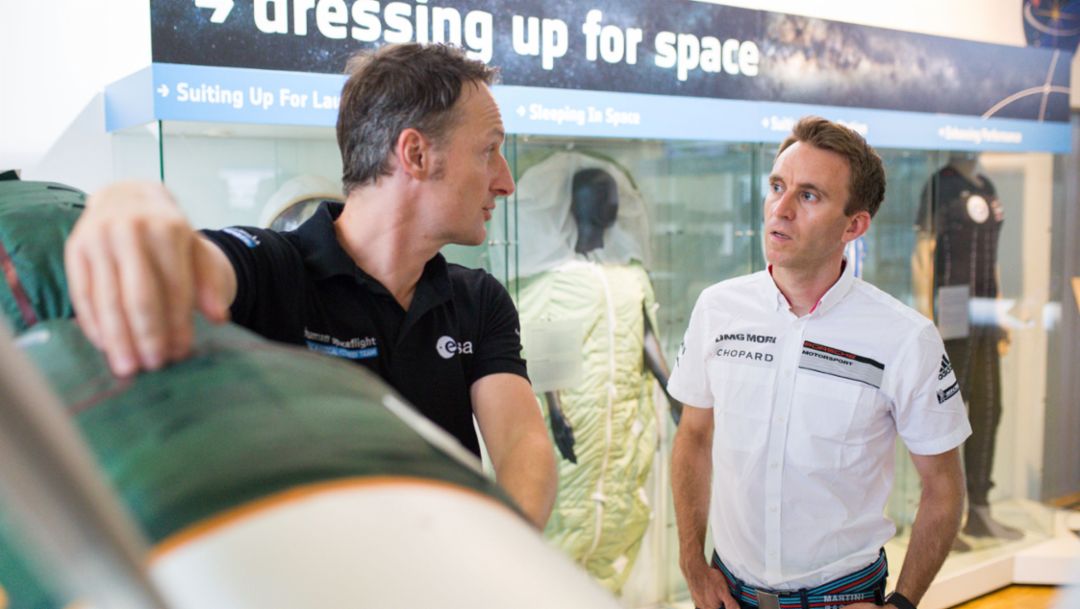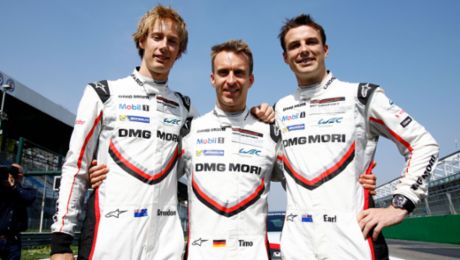A thump. A Soyuz capsule collides with the International Space Station (ISS) when trying to dock. Mission failed. “Wow,” exclaims Timo Bernhard, staring at the joystick in his hand, “this is complicated”. It’s game over. Luckily, the driver from Saarland has only crashed during a simulation; both the real capsule and the ISS remain unscathed. “Compared with driving a car, you have to be more careful and more alert when flying a spacecraft,” admits the two-time Le Mans champion, who is well-versed in using simulators and can operate the steering wheel of his Porsche 919, with its 24 buttons and six paddles in his sleep. This is a man who can instinctively navigate his way across the track at over 300 km/h – but who fails to park a Soyuz properly in space when advancing at a snail's pace of merely 15 centimetres per second. There's no shame in that though. “You need 1000 attempts before you master the process,” explains Matthias Maurer, who has become an expert in it. He will be the second German astronaut, after Alexander Gerst, to fly to the ISS, due to occur between 2020 and 2022.
In 2017, Bernhard invited his fellow compatriot from Saarland to the Nürburgring
Part two of the racing-driver-meets-space-pilot-saga takes place in Cologne at the European Astronaut Centre, part of the European Space Agency (ESA). In the summer of 2017, Timo Bernhard invites his fellow compatriot from Saarland to the Nürburgring, where the Porsche factory driver introduces his visitor to his world. He explains how to steer the 919 ever faster round a bend, shows him how to set the brake balance and explains why driving in the rain at night requires courage. He talks of his love for speed-racing, of his 368 km/h feat in Le Mans, of his unbelievable four-second acceleration from 0 to 200, and of forces on the body of up to five g – whereby your body feels five times heavier than usual.
In reply, Maurer states that he has to endure g-forces of up to 8, as the rocket accelerates to 28,000 km/h in just nine minutes – although apparently “you can hardly feel it”. This means that six hours later, the crew of three dock onto the ISS, 400 kilometres above Earth. Two men reaching for their limits: it’s easy to see where they share common ground. In the summer of 2018, Bernhard visits the ESA and enters into the astronaut's orbit.
With the failed pit-stop-in-space simulation experience behind them, the astronaut and racing-driver climb aboard an ISS Columbus training module. In an unassuming 40 x 40 metre room of 20 metres in height, 1:1 scale imitations of the real space station modules have been constructed for training purposes. One of the training modules is submerged in a 10-metre-deep pool, so that the budding astronauts can get to grips with zero gravity.
“The suits are configured to make you feel weightless in water”, says Maurer, who – during one training session – became entangled in a rope several times while wearing his 130-kilogram suit. An incident that almost saw him dumped from the training programme. “Wearing a curved helmet visor under water is like looking through a magnifying glass,” explains the 48-year old. Timo Bernhard’s work suit, on the other hand, is much easier to wear. His fireproof overalls weigh barely one kilogram, and his helmet little more than that.
Exercise for two hours a day
“I’ve never experienced what it feels like to be weightless,” he says, “but I would love to know what it's like”. Weightlessness is the reason why astronauts have to exercise for two hours a day when they're in space. Racing car drivers are put through a similar training programme back on Earth. Drivers like Bernhard must exert themselves through running and weight training, so that they can endure the physical strain of a race; astronauts have to train hard so they don’t return to Earth with the body of a 90-year old. If you don’t exercise when in zero gravity, you lose bone density and muscle mass, your bodily fluids are redistributed, and you lose blood volume.
"You age 30 x times faster than on Earth,” says Maurer knowingly. You train on treadmills – with a rubber cord attached to counteract the weightlessness – on ergometers and on weight-training machines with vacuum cylinders. “If you're in outer space and nature calls, you have to remember about the ‘recoil principle’,” says the astronaut tongue in cheek. Always hold on tight.
Maurer, who has a PhD in Materials Science, points out that this principle also applies to his work in the Columbus module and explains to his visitor what his tasks involve. What happens to a substance when it melts in zero gravity? “It’s important to know this when building engines, as they need to be highly robust at a low weight,” he says. The precise instructions as to what he has to do are transmitted from Earth via radio broadcasting, which makes his job more that of a lab assistant than a research scientist.
Both Bernhard and Maurer rely on teamwork to reach their goals
“I’m always in contact with my team via radio, as well,” says the Porsche racing driver. Just as the people sitting at the control panel in Cologne transmit instructions remotely to their man in space, the engineers, sat in their pit in front of the monitors, observe every inch of Bernhard’s race. They monitor every piece of data from the vehicle, check the racing lines and give instructions such as: “Stay further in when you reach corner five”. Both Bernhard and Maurer rely on teamwork to reach their goals, and both jobs require a lot of trust in those teams. “You need support from your team in order to do your job,” stresses the astronaut.
However, astronauts and racing-car drivers react differently in situations that require self-reliance – such as when a fire or leak breaks out on the ISS, or when the car right in front of you, driving at 250 km/h, starts skidding, or your own vehicle receives an impact. “The number one rule is to remain calm,” says Maurer, who knows the procedure for any crisis situation, which he reels off step-by-step. “If I don’t follow protocol, I might crash and die,” he says. “I can’t just park on the trackside and walk over to the pit”.
In an emergency situation, Timo Bernhard allows his gut instinct to guide him. He has but milliseconds to act quickly and to make the right decision, without hesitating. “It’s become second nature, knowing what I should do in any situation,” says the 37-year old. Both men face the same risk: in their line of work, there may not be a second chance. A few hours later in the ESA Centre, Timo Bernhard and Matthias Maurer are ready to part ways again, but not before the racing car driver learns that astronauts train and prepare for 10 years, for just one trip into space. “That would be like practising on a simulator for 10 years, just to run one 24-hour race in Le Mans,” he says, gobsmacked; that would completely out of the question for him. Docking a Soyuz capsule to the ISS? Experiencing a pit stop in space? Not necessary. Driving his Porsche 919 into the pit lane on Earth is more than enough.
Matthias Maurer
Astronaut Matthias Maurer was born in 1970 and has a PhD in Material Sciences. In 2008 he was one of 8,500 applicants and one of only 10 candidates to be accepted. In 2015, he began his foundation training with the ESA. Part of the training included being taken to a 20-kilometre cave system, along with other trainees, and having to navigate back to ground level. Another part of the programme involved a 48-hour survival training course in the winter. During his training, Maurer learnt how to stitch up his own wounds and to pull out his own teeth. He learnt Russian and Chinese, and can speak English, Spanish, French, Catalan and German fluently. On the 25 September 2018, Maurer received the official title of astronaut.
Timo Bernhard
Racing car driver Timo Bernhard was born in 1981 and at just 10 years of age started driving racing carts. He soon discovered endurance racing and won the classic Le Mans race in 2010 with Audi, and in 2017 with Porsche. In 2015 and 2017, he became Driver's Champion in the World Endurance Championships. He holds the world record for the Nürburgring-Nordschleife, with a lap time of 5:19.546 minutes.
Info
This article first appeared in the Stuttgarter Nachrichten newspaper.
Author: Jürgen Kemmner
